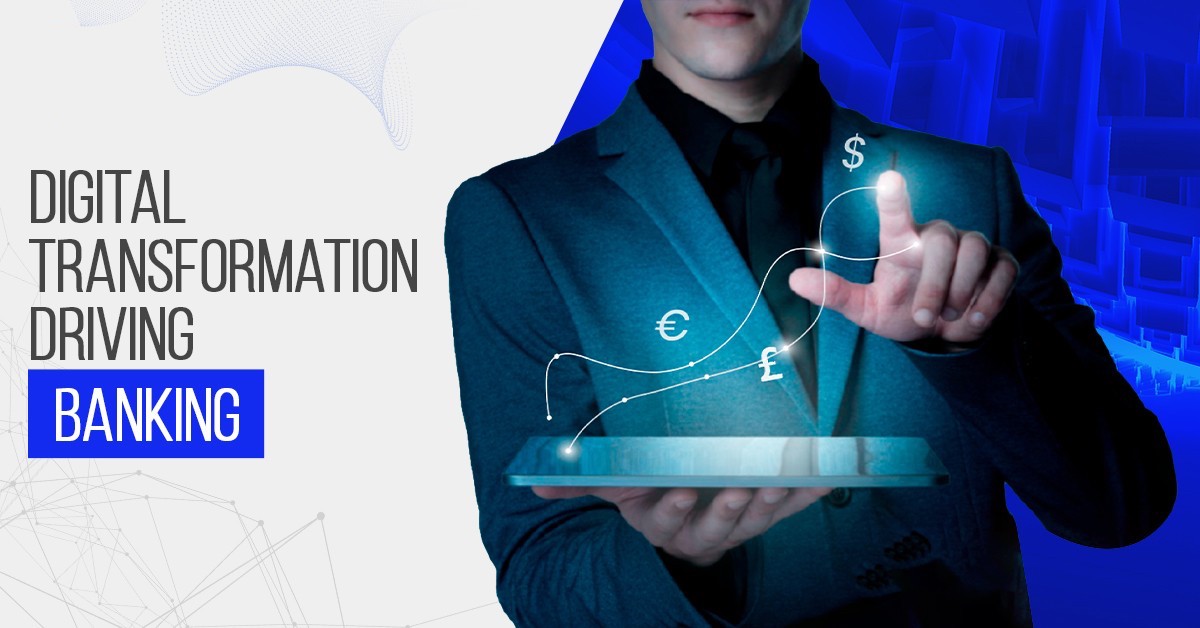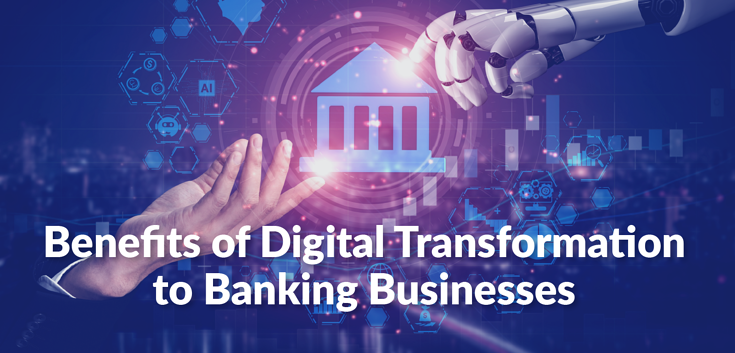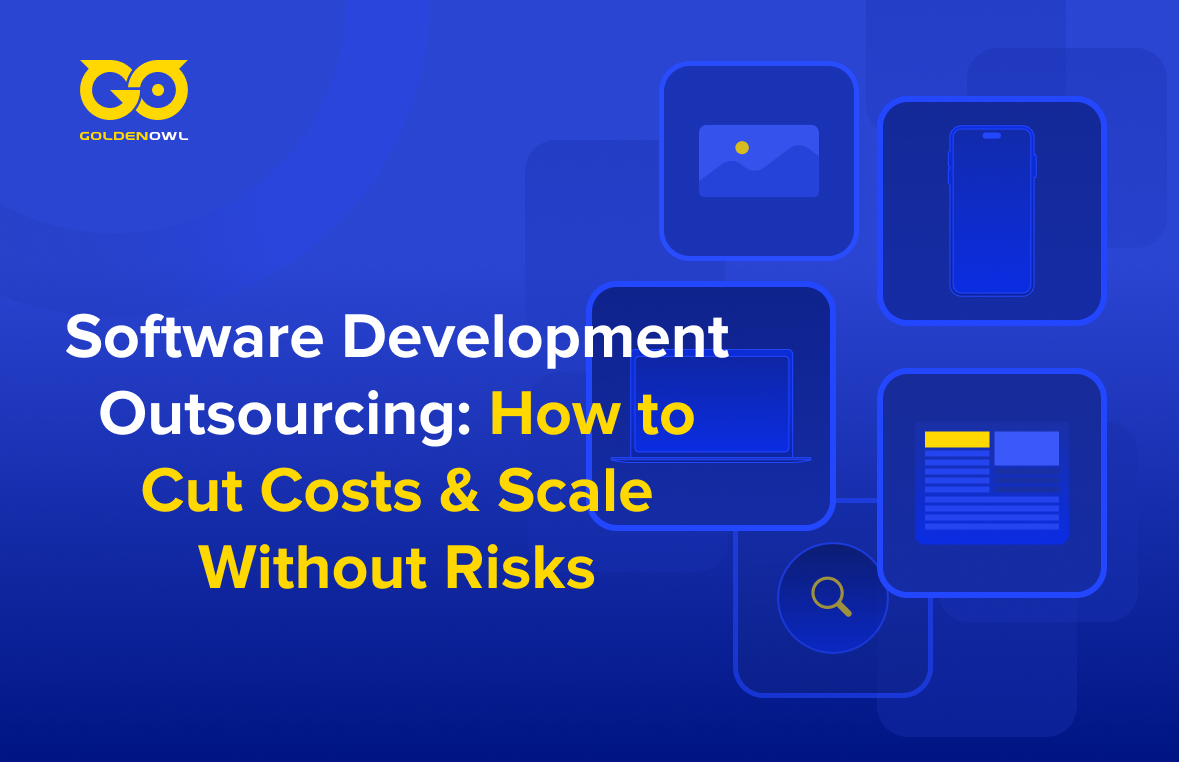Join the revolution of digital transformation in banking. Discover the forces driving change and the benefits in a world where finance is at your fingertips.
The days of waiting in long lines for a bank teller are fading fast. Driven by customer demand and technological advancements, the banking industry is undergoing a digital transformation revolution.
The digital transformation in banking goes beyond simply offering online services. It's about fundamentally changing how banks operate and deliver value to their customers.
Read more: 15 Best Digital Transformation Consulting Companies (2024)
Why Digital Transformation in Banking?

Several factors are fueling this digital shift. Customers today crave convenience, speed, and personalization in their banking experiences. They're accustomed to using smartphones and tablets for everything from shopping to hailing rides, and they expect the same level of ease when managing their finances. Legacy banking systems, however, were often built for a different era, one characterized by paper checks and in-person branch visits. These systems struggle to keep pace with the demands of today's digital-savvy consumers.
The Driving Forces Behind Digital Transformation in Banking

Several factors propel the digital transformation in banking:
Customer Expectations
Modern customers, particularly the Gen Z and Millennial generations, have heightened expectations for the services they receive. They demand a level of service equivalent to that of the leading tech giants like Google and Apple.
This translates into a seamless, personalized banking experience accessible across multiple digital platforms. Whether using a desktop computer, a mobile device, or a tablet, modern customers want a consistent and intuitive experience that makes banking simple and efficient.
Technological Advancements
With the rapid technological advancements, the banking industry has been pushed to adopt new technologies such as AI, blockchain, and data analytics to enhance their services and security measures. As technology continues to evolve, banks are expected to embrace the latest innovations to stay competitive and meet the changing needs of their customers.
Competitive Pressure
In an era where fintechs and neo-banks are disrupting the financial services industry with their innovative and customer-centric services, traditional banks are facing immense pressure to keep up with the changing times and retain their customer base.
These new entrants in the market are leveraging new technologies, agile business models, and data-driven insights to offer a wide range of services that cater to modern customers' evolving needs and preferences.
Regulatory Compliance
Banks are under increasing pressure to meet stringent compliance requirements. Digital solutions have emerged as a powerful tool that enables banks to comply with regulations more efficiently and effectively.
The Technologies Shaping the Future of Banking

Banks are embracing a range of technologies to meet these evolving customer needs. Here are a few key players:
Mobile Apps
At the heart of digital transformation are mobile banking apps. These user-friendly interfaces allow customers to check balances, transfer funds, deposit checks, and even pay bills—all from the palm of their hand.
The convenience factor is undeniable, but mobile apps are also becoming increasingly sophisticated. Biometric authentication, for example, adds another layer of security. At the same time, budgeting tools and financial management features empower users to take control of their finances.
Artificial Intelligence (AI)
AI-powered chatbots can answer customer queries 24/7, providing immediate support without the need to wait on hold. However, AI's potential goes beyond basic customer service.
It can be used to analyze vast amounts of data to identify fraud patterns, personalize investment recommendations, or even automate loan approvals. As AI continues to develop, we can expect to see it play more significant roles in shaping the future of banking.
Big Data Analytics
Banks can gain valuable insights into spending habits and financial goals by analyzing vast amounts of customer data. This allows them to offer targeted financial products and services.
Imagine a bank that can automatically recommend a savings plan based on your spending habits or suggest a credit card with rewards tailored to your lifestyle preferences. Big data analytics empowers banks to become true financial partners, offering proactive guidance rather than reactive products.
Blockchain
This secure distributed ledger technology is promising for streamlining back-office processes and enabling faster, more transparent transactions. Traditional interbank transactions can be slow and cumbersome.
Blockchain technology has the potential to revolutionize this process, allowing for secure and near-instantaneous settlements. Beyond interbank transactions, blockchain can also be used to improve the efficiency of trade finance, supply chain management, and other areas.
How Digital Transformation Benefits You and Your Bank

The digital transformation in banking offers a win-win situation for both banks and customers. Here are some of the key benefits:
- Enhanced Customer Experience: Digital tools provide greater convenience and accessibility for customers, allowing them to bank anytime, anywhere. Whether checking a balance on the morning commute or transferring funds to a friend late at night, mobile apps and online banking platforms empower customers to manage their finances on their own terms.
- Increased Efficiency: Task automation and streamlined operations lead to cost savings for banks and faster service for customers. Repetitive tasks like data entry and check processing can be handled by machines, freeing up human employees to focus on more complex tasks and providing personalized assistance to customers.
- Improved Risk Management: AI and data analytics can help banks identify and prevent fraud. Banks can protect their customers from financial losses by analyzing spending patterns and flagging suspicious transactions.
- Personalized Banking: By leveraging customer data, banks can offer personalized financial products and services that better meet individual needs. Imagine receiving loan offers with pre-approved rates tailored to your creditworthiness or investment opportunities aligned with your risk tolerance. Digital transformation allows banks to transition from a one-size-fits-all approach to a model that provides targeted solutions for each customer.
Digital Dilemmas: Banking's Roadblocks to Innovation
Despite the clear benefits, banks face several challenges in their digital transformation journey:
- Legacy Systems: Many banks still rely on outdated systems incompatible with new technologies.
- Cybersecurity Threats: As banking goes digital, the risk of cyber-attacks increases, necessitating robust security measures.
- Cultural Resistance: Shifting from traditional banking to a digital-first approach requires a change in mindset at all organizational levels.
A Glimpse into the Future of Digital Transformation in Banking

Digital transformation in banking is an ongoing process. As technology continues to evolve, we can expect to see even more innovative solutions emerge. Here are some exciting possibilities on the horizon:
- Embedded Finance: Imagine seamlessly paying for your groceries or hailing a ride without ever leaving your banking app. Embedded finance integrates financial services into everyday activities, making payments and managing finances an even more frictionless experience.
- Open Banking: Open banking allows customers to share their financial data securely with third-party applications. This opens the door to a wider range of financial products and services tailored to individual needs.
- Challenger Banks: These digital-only banks operate entirely online, offering competitive rates and an utterly app-driven experience. They are forcing traditional banks to innovate and adapt to meet customers' changing demands in the digital age.
The future of banking is undeniably digital. By embracing new technologies and prioritizing customer experience, banks can ensure they stay relevant and competitive in this rapidly evolving landscape.
Conclusion
Digital transformation is not just about adopting new technologies. It's about reimagining the banking experience in the digital age. Banks that embrace this change will thrive, while those who resist will be left behind. As the industry continues to evolve, digital transformation will be the key to unlocking new opportunities and delivering unparalleled value to customers.
I hope this article provides a comprehensive overview of the digital transformation in banking. If you need further details or customization, feel free to ask in the comment section below.





















